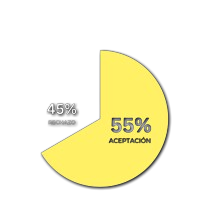El impacto de la neurotecnología en el proceso de enseñanza - aprendizaje en el aula
DOI:
https://doi.org/10.59282/reincisol.V3(6)4770-4789Palabras clave:
aprendizaje, educación, neuroimagen, neurotecnología, estimulación cerebral.Resumen
La presente revisión sistemática tuvo como objetivo analizar el impacto de la neurotecnología en el aprendizaje en el aula. Ante el creciente interés por integrar tecnologías que permitan medir y estimular la actividad cerebral en los procesos educativos, surgió la necesidad de examinar su potencial, efectividad y desafíos. Se realizaron búsquedas exhaustivas en bases de datos y se seleccionaron estudios empíricos que abordaran el uso de técnicas como neuroimagen, estimulación cerebral no invasiva e interfaces cerebro-computadora en entornos educativos. Los resultados demostraron que la neuroimagen brinda información valiosa sobre los procesos cerebrales involucrados en el aprendizaje, mientras que la estimulación cerebral y las interfaces cerebro-computadora pueden mejorar el rendimiento cognitivo y facilitar el aprendizaje personalizado. No obstante, también se identificaron desafíos como la interpretación de resultados, privacidad, equidad y riesgos potenciales. Se concluyó que se requiere un enfoque interdisciplinario, más investigación y colaboración para garantizar una implementación ética, responsable y efectiva de la neurotecnología en beneficio del aprendizaje de los estudiantes.
Descargas
Métricas
Citas
Abiri, R., Borhani, S., Sellers, E. W., Jiang, Y., & Zhao, X. (2019). A comprehensive review of EEG-based brain–computer interface paradigms. Journal of Neural Engineering, 16(1), 011001. https://doi.org/10.1088/1741-2552/aaf12e
Binbay, Z., Lam, J., & Wolff, A. (2021). Brain-computer interfaces in mathematics education: A pilot study on attention and working memory. Frontiers in Human Neuroscience, 15, 628247. https://doi.org/10.3389/fnhum.2021.628247
Brem, A. K., Fried, P. J., Horvath, J. C., Robertson, E. M., & Pascual-Leone, A. (2014). Is neuroenhancement by noninvasive brain stimulation a prospect in practice? Frontiers in Systems Neuroscience, 8, 4.
Farah, M. J. (2015). The ethics of neurotechnology for national security intelligence. En J. D. Bayer y J. Galliot (Eds.), Neuroethics and society (pp. 87-104). Springer. https://doi.org/10.1007/978-3-319-16252-4_6
Gabrieli, J. D. (2016). The promise of educational neuroscience: Comment on Bowers (2016). Psychological Review, 123(5), 613-619. https://doi.org/10.1037/rev0000034
Hernández-González, J., Prieto, A., Rodríguez-Velázquez, J. A., & Mårtensson, J. (2021). A systematic review of the neuroscientific studies on the effects of different teaching methods on students. Frontiers in Education, 6, 619048. https://doi.org/10.3389/feduc.2021.619048
Howard-Jones, P. A. (2018). Evolution of educational neuroscience. Routledge.
Hoyek, N., Collet, C., Fargier, P., & Guillot, A. (2014). The use of neuroimaging to better understand the impact of motor imagery training on motor performance. Advances in Medical Sciences, 59(1), 19-25. https://doi.org/10.1016/j.advms.2014.06.002
Lotte, F., Bougrain, L., Cichocki, A., Clerc, M., Congedo, M., Rakotomamonjy, A., & Yger, F. (2018). A review of classification algorithms for EEG-based brain-computer interfaces: A 10 year update. Journal of Neural Engineering, 15(3), 031005. https://doi.org/10.1088/1741-2552/aab2f2
Maslen, H., Earp, B. D., Cohen Kadosh, R., & Savulescu, J. (2014). Brain stimulation for treatment and enhancement in children: An ethical analysis. Frontiers in Human Neuroscience, 8, 953. https://doi.org/10.3389/fnhum.2014.00953
Santarnecchi, E., Muller, T., Poerio, G., Huijbers, W., Ku, S. P., Motsumiya-Kropf, S., & D'Angiulli, A. (2015). Enhancing cognition using transcranial electrical stimulation. Current Opinion in Behavioral Sciences, 4, 171-178. https://doi.org/10.1016/j.cobeha.2015.06.003
Sigman, M., Peña, M., Goldin, A. P., & Ribeiro, S. (2014). Neuroscience and education: Prime time to build the bridge. Nature Neuroscience, 17(4), 497-502. https://doi.org/10.1038/nn.3672
Snowball, A., Tachtsidis, I., Popescu, T., Thompson, J., Delazer, M., Zamarian, L., ... & Kadosh, R. C. (2013). Long-term enhancement of brain function and cognition using cognitive training and brain stimulation. Current Biology, 23(11), 987-992. https://doi.org/10.1016/j.cub.2013.04.045
Suárez, L. M., Mercier, E., & Almécija, Y. (2019). Neurotecnologías aplicadas al proceso de enseñanza-aprendizaje de lenguas extranjeras. Revista de Estudios y Experiencias en Educación, 18(38), 231-246. https://doi.org/10.21703/rexe.20191838suarez16
Tzovara, A., Kragic, D., Costantini, I., Chiarello, D., Kapeller, C., Dönmez, R. G., ... & De Lucia, M. (2020). Unveiling the links between governance, integration and brain signatures in learning mathematical concepts. NPJ Science of Learning, 5(1), 1-14. https://doi.org/10.1038/s41539-020-0068-6
Publicado
Cómo citar
Número
Sección
Licencia
Derechos de autor 2024 Juan Carlos Vasco Delgado, Geovanny Francisco Ruiz Muñoz, Betty Azucena Macas Padilla, César Andrés Mero Baquerizo

Esta obra está bajo una licencia internacional Creative Commons Atribución-NoComercial-CompartirIgual 4.0.

























